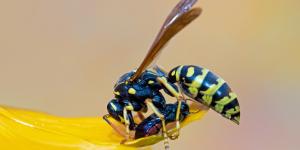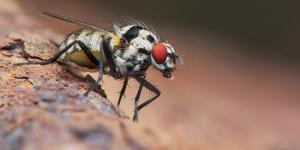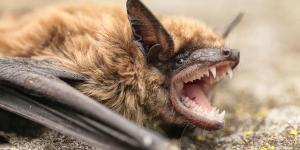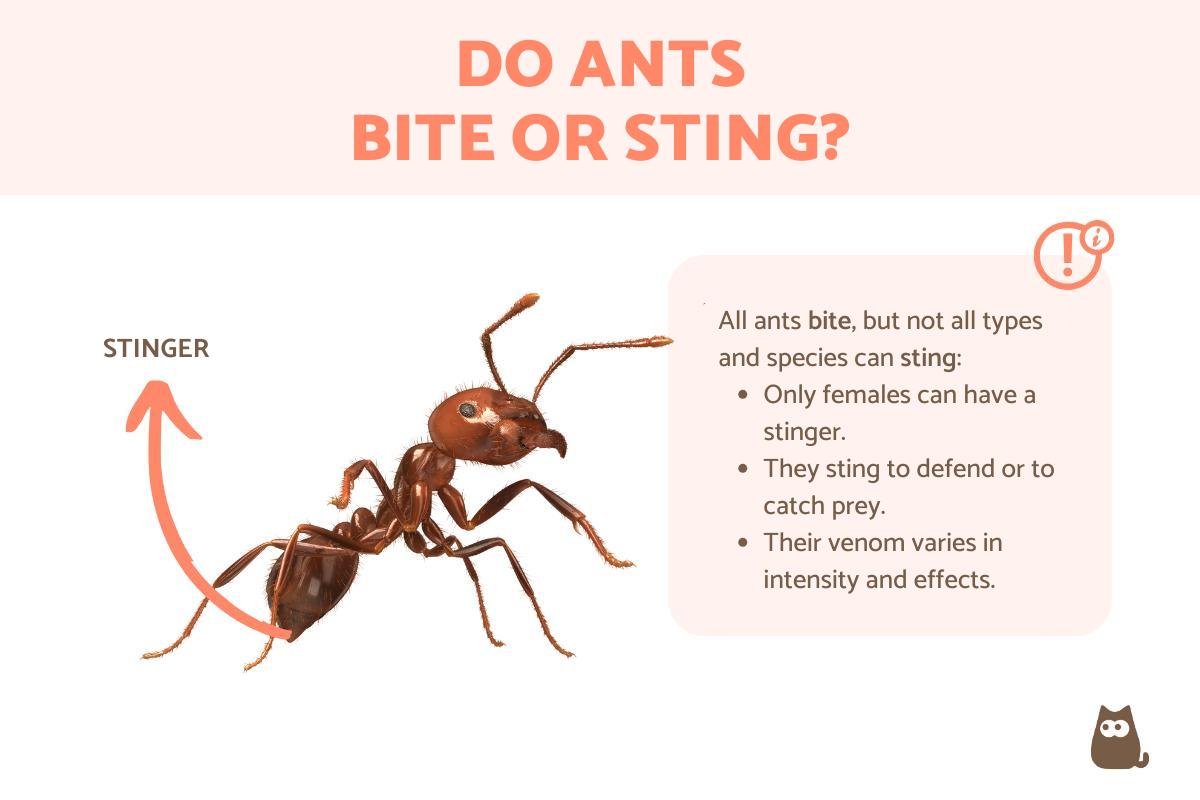Do Ants Bite or Sting Humans?

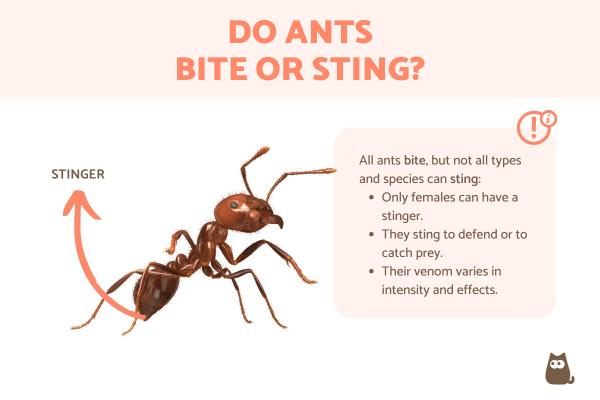
Ants are a family of insects known as Formicidae, themselves part of the order Hymenoptera. This order also includes bees and wasps, insects which are commonly known for their ability to sting. Ants share many similarities with other hymenopterans, including compound eyes and the presence of an ovipositor in some females. It is this ovipositor in bees and wasps which provides them with the ability to sting. Ants also have very strong mouthparts, using them to saw off pieces of vegetation which can be much larger than themselves. Since ants also have these adaptations, many of us may ask the question do ants bite or sting humans?
While ants can bite and sting humans, their ability to do so varies greatly according to species. AnimalWised looks in more detail about the ability of ants to bite or sting. We also provide a list of ants that sting with photos of what they look like so you can avoid them if you come across them in the wild.
Do ants bite or sting?
Ants can sting or bite, abilities which help them survive in their various habitats. All ants have the ability to bite to some degree, although not all bites are perceptible to humans. However, not all species of ant are able to sting. Furthermore, not all individuals of the same species are able to sting because they lack the anatomical features to do so. As with bees and wasps, only female ants are able to sting.
The ability to bite is due to specialized mouthparts which consist of a pair of mandibles, among other structures. Mandibles are used for various activities, such as eating, digging, transporting and defending themselves. The main uses of these mouthparts are the following:
- Feeding: the typical jaws of ants move transversely and have a space for chewing. Although they are not actual teeth, they have serrated structures in this area which are used for cutting and sawing. Learn more about these and other anatomical features with are article describing the body parts of an ant.
- Defense: although there may be variations between species, the mandibles of ants can be considered important weapons for defense. They can use them not only immobilize others, but also dismember other animals or cute plant matter. Although ants can bite and cause discomfort to humans due to the mechanical action, the bites themselves are not particularly harmful. Intense pain is only experienced if their bite also injects a toxic substance.
The reason only female ants can sting is because of the possession of an ovipositor. This is an organ which is used for laying eggs. In ant species that can sting, the ovipositor is modified so that it can act as a stinger. No longer used to lay eggs, this stinger can be used as a weapon for defense against predators or for the immobilization of their own prey. The sting can cause mechanical damage, but it can also inject toxins for these purposes.
Depending on the species of ant, the toxins which the stinger uses to envenomate other animals can very in intensity. The type of compound used in the toxin can also have different results. For humans, an ant sting can range from slightly uncomfortable to extremely painful and dangerous. The extent of the danger depends on the species and sensitivity of the person affected.
Discover more about ant physiology with our article which explains whether ants have brains like us.
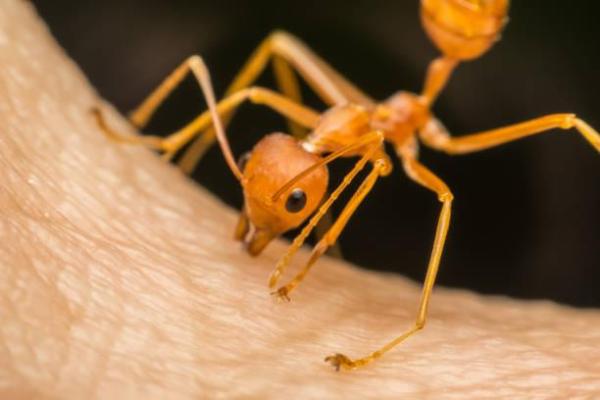
Why do ants bite?
The largest ants that exist measure about 30 mm. While this large for an insect, it is small compared to other venomous animals such as scorpions, jellyfish or snakes. Despite such small stature, they have an outsized ability to harm organisms larger than themselves. In science, they are frequently studied for their ability to organize and defend themselves, both as individuals and as part of a colony.
Ants bit and sting for two fundamental reasons. They want to either defend themselves or to catch prey for their own sustenance. They tend to be territorial, so they can fight with other ant colonies to establish their territory. They also fight to capture prey that is then processed and taken to the nest. In both cases, the ants can hold the rival or prey with their jaws, but it is with the stinger with which they inject venom exuded from specialized glands.
The reason why an ant will bite or sting a human is not to attack them as prey. They will only do so when they feel threatened, something which does not require active behaviors on our part. If we accidentally sit near an anthill, it is not uncommon for ants to bite and sting us because they fear their home is under attack. Generally speaking, ants will leave us alone unless they have reason to feel threatened.
Discover more about how ants retrieve prey with our article explaining why ants carry dead insects.
What is an ant bite or sting like?
Ants can be quite aggressive animals that do not hesitate to defend themselves, especially if their nest is in danger. Their collective organization includes coordinating defense and attacking behaviors by the individual when necessary. Some ants will try to bite, but females that have a stinger will be more likely to be sent as defenders to envenomate. Injecting their toxins is a much more effective tactic than biting alone.
When an ant bites a human, they are generally not very painful. While the mandibles are relatively very sharp, their small size means they are not very effective against a large animal like a human. Generally speaking, the larger the ant, the more painful the bite.
In comparison, an ant sting can be incredibly painful. Depending on the species and type of toxin, the symptoms of an ant sting can vary. Some toxins are alkali, others are acidic. In addition to the pain of the sting, they usually cause hives which are swollen welts on the skin. Some individuals may have a particular sensitivity to some of the compounds in the toxins, resulting in a severe allergic reaction. Such serious complications necessitate immediate treatment.
In addition to stinging and biting humans, ants can also bite dogs and other animals. In the case of domestic pets, it is important to pay attention when our animals are running in nature. If we encounter an anthill, we should prevent our dog from investigating them.

Ant species that sintg
As we have stated throughout this article, different ants will be more or less dangerous depending on various factors. Not only do some ants have a more dangerous sting, but some are naturally more aggressive and territorial than others. This can increase the likelihood of a sting, especially if we are in the vicinity of their nest. For this reason, we look at some of the most dangerous ant species:
- Bullet ant (Paraponera clavata): it is a species native to the Americas that measures between 18 and 30 mm. It is considered to be the ant with the most painful sting in the world. It has been compared to the impact of a bullet, hence the species name. The effects of this sting can last up to 24 hours. The bullet ant has a powerful neurotoxic venom with important effects on its victims.
- Giant Amazonian ants (Dinoponera spp.): this is a genus of ants also native to the South America, which can measure up to 4 cm, making them some of the largest ants in the world. There are 6 species within the genus which produce a powerful venom composed of several substances that cause severe pain, bleeding, alteration of the ganglia, tachycardia and edema.
- Bull ants (Myrmecia spp.): they are also known as jumping ants, among other common names. They are characterized by being quite aggressive. The species are native to Australia and its nearby islands. They produce a painful sting and inject venom. Unlike other ants, as well as some wasps or bees, this ant does not release its stinger. This menas it can sting repeatedly without causing harm to itself.
- Fire ant (Solenopsis invicta): this is a species native to South America, but has been introduced to other regions, such as Asia and Australia. It is known to have some presence in Europe. It measures between 1.2 and 6 mm, depending on the type of ant. With its bite, it inoculates a complex venom with several types of proteins. This can cause inflammation, affectation of the bitten area or anaphylactic shock.
Now that you know some of the most aggressive stinging ants, don't miss this other article on all the different species which describes the different types of ants.
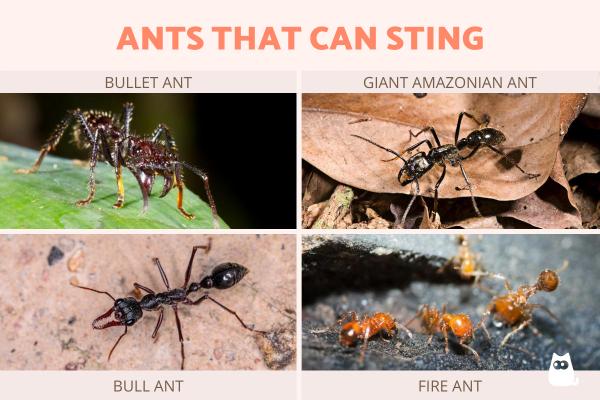
If you want to read similar articles to Do Ants Bite or Sting Humans?, we recommend you visit our Facts about the animal kingdom category.
- Gayubo, S., & Villar, J. (2015). Order Hymenoptera. Retrieved from: http://sea-entomologia.org/IDE@/revista_59.pdf
- Negron, J. (2023). Formicidae. Retrieved from: Animal Diversity Web. https://animaldiversity.org/accounts/Formicidae/

